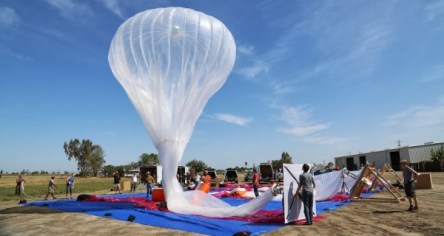With all the amazing progress technology has made so far, two-thirds of the world’s population does not have access to Internet, 4 billion people out of Earth’s 7 billion inhabitants. Google’s Project Loon aims to change that. This larger part of the population who needs access to the Internet either cannot afford the cost of a connection, or none exists where they live. Google’s project is among the most fantastical ones out there. What Loony thing is this? Project Loon is the innovative work of engineers attempting to bring internet access to rural and remote areas as well as to bring people back online after disasters. The concept is a network of high-altitude balloons running on the edge of the universe, also known as the stratosphere, at about 20 miles (32km) high. This space in the sky is sort of “above the sky,” twice as high as where the planes fly so that no interference actually occurs. This aerial wireless network can provide up to 3G-like speeds, they say. The project began in 2013 in New Zealand where a small group of pioneers tested the Loon technology. Later, the pilot test expanded to California’s Central Valley and in Northeast Brazil; the results of the pilot tests are being used to improve the technology in preparation for the next stages of the project. The balloons are moved using wind data from the National Oceanic and Atmospheric Administration (NOAA). Once they collect the information about the speed and direction of the wind, they will move across the stratosphere. To help resist high pressure in the stratosphere, the central control of each balloon is covered by a sheet of polyethylene plastic filled with helium. This envelope apparently has the ability to keep the controllers in the air...
Connecting from Afar
Internet Goes Remote via Balloon
As a Peace Corps volunteer serving in rural Paraguay, I encountered moments when a quick internet search would have been a blessing. The resource could help with verb conjunction as I fumbled through Spanish or event planning during the rainy season. I shrugged off the inconvenience as part of the job. Away from the city, internet connectivity simply wasn’t an option. Now, an exciting new project delivers life-altering internet connectivity for isolated communities. Google’s recent launch of super pressure balloons, dubbed Project Loon, has drawn attention to the emergence of balloon-based internet connectivity. Space Data and World Surveillance Group have launched similar projects, mainly for military purposes. Google is the first to use the technology to bring 3G speeds to remote areas for civilian use. The company is also the first to attempt long-term operations using the balloons, currently up to 100 days. If it works out, here are the kinds of problems that Project Loon could solve: Back in 2010, my Paraguayan students were in a frenzy over the FIFA World Cup. I jumped on the opportunity to turn their fanaticism into a learning experience. We began a geography series highlighting dominant teams like Spain, Brazil, Uruguay, and the Netherlands. As I began the class session on Japan, I remembered a college friend who was teaching in Tokyo at the time. I thought: How awesome would it be to have our students interact with each other in real time. They could see one another’s faces and take a little tour of each other’s worlds. In my rural station, access to basic necessities was scarce. Forget smartphones and data plans. The infrastructure simply was not available. Google’s balloon-based connectivity could change that. On a larger scale, balloon-based connections permit nonprofits, hospitals, and businesses in developing regions...


